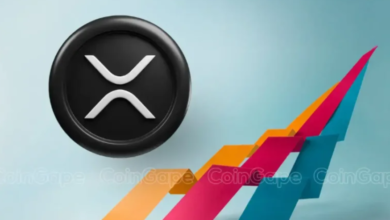DSP Advertising: How Automated Bidding Optimizes Campaign Performance

In the competitive world of digital advertising, maximizing efficiency and effectiveness is crucial. Demand Side Platform (DSP) advertising has become a game-changing technology for marketers, enabling automated bidding that streamlines ad buying while improving campaign performance. This article explores how automated bidding within DSPs enhances marketing strategies, breaking down its mechanics, benefits, and strategic implications.
How Automated Bidding Works in DSPs
Automated bidding in DSP advertising is about making real-time decisions on how much to bid for an ad impression based on specific campaign criteria. When a user loads a webpage or app, their data (such as browsing behavior, location, and device type) triggers an auction. The DSP evaluates this data, determines the impression’s value, and bids accordingly—all within milliseconds.
The Real-Time Bidding (RTB) Process
The DSP bidding process follows a structured sequence:
- User Data Collection: Information such as demographics, online behavior, and past interactions is gathered.
- Bid Request: This data is sent to DSPs via an ad exchange, signaling that an impression is available.
- Automated Decision-Making: The DSP analyzes the request, cross-checking it with campaign objectives like cost-per-acquisition (CPA), conversion likelihood, and audience targeting.
- Bidding Execution: The DSP submits a bid in the auction, aiming to secure the impression at the most efficient cost.
- Ad Delivery: If the bid wins, the DSP delivers the advertiser’s ad to the user, ensuring real-time, optimized placement.
This system allows for highly targeted ad placements, increasing engagement and conversions while reducing wasted ad spend.
Key Benefits of Automated Bidding in DSP Advertising
1. Precision Targeting
Automated bidding ensures ads reach the most relevant audience by leveraging first-party and third-party data to refine targeting based on:
- Demographics: Age, gender, income level.
- Behavioral Patterns: Past purchases, browsing history.
- Contextual Relevance: Matching ads with relevant content.
This precision reduces wasted impressions, making every ad dollar count.
2. Cost Efficiency
DSPs use machine learning algorithms to adjust bids in real time, ensuring:
- Lower acquisition costs by avoiding unnecessary high bids.
- Budget optimization by prioritizing high-value impressions.
- Improved return on ad spend (ROAS) through smarter allocation.
3. Scale and Speed
Manual bidding is impractical at scale. DSPs automate the process, allowing advertisers to:
- Manage millions of ad impressions across various platforms.
- Reach global audiences without manual intervention.
- Execute campaigns instantly across websites, mobile apps, and streaming platforms.
4. Dynamic Campaign Optimization
With real-time performance tracking, DSPs can:
- Increase bids on high-performing impressions.
- Reduce spending on underperforming placements.
- Shift budgets dynamically based on audience engagement trends.
This on-the-fly adjustment leads to higher conversions and better ad efficiency.
5. Time Savings for Marketers
Automation frees marketers from manual bid adjustments, allowing them to focus on:
- Creative strategy and messaging rather than logistics.
- Audience insights and campaign analysis for deeper engagement.
- Experimentation with new targeting approaches to refine strategies.
Challenges and Considerations
Despite its advantages, automated bidding comes with challenges:
1. Data Privacy Compliance
With regulations like GDPR and CCPA, DSPs must:
- Ensure ethical data collection and user consent.
- Adapt to privacy-first strategies like contextual targeting instead of cookie-based tracking.
2. Ad Fraud Risks
Automated bidding can be exploited by:
- Bot traffic generating fake impressions.
- Invalid clicks wasting ad spend.
Marketers should use DSPs with built-in fraud detection tools.
3. Learning Curve
Effective DSP use requires:
- Understanding bid strategies (e.g., cost-per-click vs. cost-per-impression).
- Analyzing real-time performance data to refine settings.
- Experimenting with budget allocation across channels.
Strategic Implications for Marketers
1. Adapting to Market Trends
DSPs allow advertisers to quickly adjust to:
- Shifts in consumer behavior (e.g., seasonal trends).
- Competitive bidding environments.
- Emerging ad formats (video, connected TV, interactive ads).
2. A/B Testing and Experimentation
Marketers can run multiple automated bidding strategies to:
- Test different audience segments.
- Compare various ad creatives.
- Identify high-performing inventory sources.
3. Seamless Integration with Other Marketing Tools
For maximum impact, DSPs should integrate with:
- Customer Relationship Management (CRM) systems for audience insights.
- Data Management Platforms (DMPs) to refine targeting.
- Attribution tools to track conversions across devices.
The Future of Automated Bidding in DSPs
As digital advertising advances, DSPs are evolving with:
- AI-Driven Optimization: Using machine learning for predictive bidding.
- Programmatic Direct Deals: Combining DSP automation with premium inventory placements.
- Privacy-Safe Targeting: Adapting to a cookieless future through first-party data strategies.
Mastering DSP Advertising for Optimal Performance
To fully leverage DSP advertising, marketers must:
- Set clear campaign goals (brand awareness, lead generation, direct sales).
- Monitor and adjust bids based on performance data.
- Stay informed on DSP innovations and industry trends.
The Future of Digital Advertising: Automation and Precision
In today’s fast-changing ad landscape, automation, precision, and data-driven decisions are key to success. Marketers who master DSP automated bidding will maximize their ad spend, drive higher engagement, and stay ahead in the evolving digital ecosystem.




